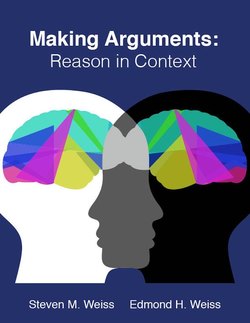Читать книгу Making Arguments: Reason in Context - Edmond H. Weiss - Страница 15
На сайте Литреса книга снята с продажи.
Principle #6—Argument differs from persuasion.
ОглавлениеMost college communication curricula have separate courses in argumentation and persuasion. It is rare to see both taught in the same course. Knowing that advocates present their arguments in hopes of achieving expected outcomes, one might think that arguments are designed to achieve persuasion, and that the two subjects ought to be taught together. Most separate the subject matters, however, because the process of arguing and the process of persuading can be entirely independent.
Here’s a real example of how this works. A jury has heard a medical malpractice case argued against a doctor whose patient died in the delivery of her baby. There is overwhelming evidence that the doctor made several avoidable errors during the delivery, and as soon as the jury begins deliberating, they agree, unanimously, that the doctor was at fault. The jury, however, immediately moves to a discussion of whether a finding against the doctor would damage the doctor’s career. “Why punish a good man for one mistake?” asks one of the jurors. The jury finds in favor of the doctor.
One could say that the jury was persuaded (influenced to do one thing) while recognizing the rationality of doing another thing, and yet choosing not to do it. This is the nature of the relationship between argument and persuasion. It also explains why people so often believe a thing and do its opposite. We want to persuade with our arguments, but we must recognize that argument and persuasion do not necessarily lead to the same ends, that conclusion and action are often at odds. (Most smokers know it’s a bad idea!)
It is not remarkable when a prosecutor presents a compelling case but the jury votes against him because they don’t like the way he dresses (another real example). An advocate gives a comprehensive policy analysis; his audience goes along on the basis of one trivial argument that seems almost inconsequential.
